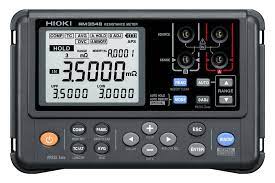Electrical Instruments, Measurement & Analysis Instruments, Resistance Meters
Resistance Meters
Resistance Meters
Applications of Earth resistance meters
General information on the extent of resistance grounding and Resistance Testers applications.
Summarily presents some measurement concepts about grounding systems.
A good grounding system is necessary to maintain the safety of persons working or in contact with the facilities and to maintain optimal operating conditions in the various powered equipment. The various measures are made of ground and soil resistivity are designed to ensure this, not only in normal operating conditions but also to any circumstances that override the isolation of the lines.
There are two important parameters when designing or performing the maintenance of a Ground: Ground resistance (measured in ohms, Ω) and soil resistivity (measured in ohmmeters, Ωm).
Resistivity is a fundamental parameter in the design of earthing systems. Resistivity is an intrinsic characteristic of the soil, is independent of the morphology but depends on the humidity or temperature. Varies throughout the year. The presence of water in the soil does not necessarily imply a low resistivity.
Because the resistivity of soil varies considerably by soil type and seasonal parameters depending on the system should be designed for the worst possible conditions.
Low resistivity soils are often corrosive as they are rich in moisture and salts, this implies the need for the use of an earth resistance tester for regular monitoring of the grounding system.
In that sells manual Amperis Resistance Testers, describes several systems for measuring the ground resistance and ground resistivity. Connections are displayed graphically, allowing assimilation intuitively.
It also has many articles about teaching and can be of great help, learn more in our new section Resources – Engineering – Measure resistance grounding.
Electrical resistance can be intentionally extremely high to insulate and stop current between conductors
Learn about measuring insulation using a mega-ohmmeter.
Electrical resistance usually exists under one of two categories. The first category is the ‘small’ range of resistances used in devices that regulate the amount of current allowed through control and load devices.
The second category is resistance, which is intentionally extremely high to insulate and stop current between conductors. Insulation can be difficult to measure with conventional multimeters, using mega ohm-meters or ‘meggers’ instead to determine proper insulative properties.


